- Home
- Captain W E Johns
Biggles of the Camel Squadron
Biggles of the Camel Squadron Read online
BIGGLES
OF THE
CAMEL SQUADRON
By CAPT. W. E. JOHNS
By arrangement with THE THAMES PUBLISHING CO.
LONDON
MADE AND PRINTED IN GREAT BRITAIN BY PURNELL AND SONS, LTD.
PAULTON (SOMERSET) AND LONDON
SCAN : AK3D
Proofed by (1) an unknown drunk who’d be loved forever and (b) an anonymous mystery
FOREWORD by Capt. W. E. Johns
Biggles was not entirely a fictitious character. True, he did not exist, as far as I am aware, under that name, but the exploits with which he has been credited have nearly all been built on a foundation of truth, although, needless to say, they were not all the efforts of a single individual. Students of air-war history may recognise some of the incidents, and the names of the officers associated with them, although they are now presented in fiction form.
Sceptics may doubt this. Let them. The old saying about truth being stranger than fiction was never more apposite than in war flying, and I have hesitated to record some of the events which came under my personal notice for that very reason. I would not dare to "arrange" a collision between an aeroplane and a kite balloon, and allow the hero to survive. Yet Willy Coppens, the Belgian ace, did just that, and is alive today to tell us about it.
Again, what author would dare to make his hero slide down the cable of a captive kite balloon to the ground, without being killed? Yet it happened, and I have heard the story from the officer's own lips, and seen his hands, which still bear the marks of that grim adventure. A photograph is still extant of the machine that rammed an eight-hundred-foot wireless pylon. The pilot was knocked unconscious in the crash, and the machine remained transfixed in the pylon, hundreds of feet above the ground. Of all the amazing aeroplane crashes that surely holds the palm. It is almost incredible that the pilot survived, but he did.
I merely mention these facts to demonstrate to those unfamiliar with war flying history what amazing things could, and did, happen, things far more strange than those recorded in this book, which-and I say this in order that there should be no misunderstanding-has been written more for the entertainment of the younger generation than the hard-baked warrior.
Technical expressions have therefore been avoided as far as possible, and the stories told in a form which I hope everyone will be able to understand. In case of doubt, there is a short glossary in the book for those to whom early war flying reading matter is new.
Finally I hope that something may be learned from the "combat tactics" employed by Biggles and his friends by those who may one day find themselves in the cockpit of a fighting aeroplane, carrying on the glorious traditions of the flying service.
Postscript
The hope expressed when the last paragraph above was written was realised ten years later, when the first readers of these stories, fighting in World War II, wrote to me to say that they owed much to Biggles. In 1944 one of our leading fighter pilots, asked by a reporter from a Sunday newspaper to what he owed his success, answered "Biggles". The reporter naively headed his article "Who is Biggles?" I gather a lot of people answered his question.
HOW BIGGLES WAS "BORN"
These stories of World War I were written about a character whose exploits-little suspected by me at the time- were to continue to the present day. The first stories were written for a magazine of which I was the editor, and apart from the entertainment of the reader had the more serious purpose of presenting a picture of war flying as it was in its infancy. It seems unlikely that anyone could have suspected the developments that were to follow and astonish us in World War II.
In 1914 war flying began with pilots trying to drop stones on each other. The pistol followed, then the carbine, and the first casualties occurred. The next step was an ordinary ground machine-gun. Later, this was fixed to the machine. A great stride was made when a timing gear was produced to allow first one, then two, machine-guns to fire forward through the airscrew-at that time incorrectly called a propeller. Even in 1918 armament was still primitive compared with the types that fought in the Battle of Britain. Air combat was mostly a matter of "catch as catch can", with every man for himself. Tricks and ruses were common. Discipline was casual, for the senior officers of the R.F.C. had not had time to grow old.
In short, it was the era of experiment, of trial and error.
But it was from the apparently irresponsible behaviour of the pilots of the Kaiser's war that the traditions of the air service emerged. Discipline, speed and striking power may have been stepped up, but the human factor is the same.
W.E.J.
GLOSSARY OF TERMS USED IN THIS BOOK
Altimeter: The instrument used for determining the height of an aeroplane. It is not unlike a barometer, and is set in the instrument board.
Ammonal: A very powerful explosive. It was used in Mills bombs.
Archie: The old Royal Flying Corps expression for antiaircraft gun-fire. In World War II it became "flak".
"Blipping": The art of opening the throttle of a rotary engine in short, sharp bursts to keep it "alive".
Bomb-Toggle: The bomb release handle.
Bowden Lever: The machine-guns of certain aeroplanes were fired by depressing a lever on the joystick. Sometimes a thumb button was used in the top of the joystick. Other methods were also employed according to the type of machine.
Brass-Hats: A common expression meaning staff officers, no doubt originating from the gold device on the peaks of their caps-often referred to as "bananas".
Bristol Fighter: A famous type of two-seater British all-purpose aeroplane.
Buckingham: A type of incendiary bullet, calculated to set fire to anything it hit. They were used chiefly against lighter-than-air craft in order to set fire to the hydrogen gas with which these were inflated.
Camouflage: A word coined from the French, meaning "to conceal", "disguise", or make a thing look like something it was not. Many different forms of camouflage were employed during the war. Imitation grass mats, spread above guns, was known as camouflage. The painting of buildings, hangars and guns in sections of different colours, in order to break up their outlines, was also known as camouflage.
Centre Section: That part of the top plane of an aeroplane which comes immediately over the fuselage, and to which the wings themselves are joined.
Circus: Formations of enemy aeroplanes were commonly called circuses often they were known by the name of the leader: thus "Richthofen's circus".
Cooper Bombs: Special bombs generally reckoned to weigh twenty pounds, although as a matter of fact they usually weighed about twenty-five pounds, often carried by single-seat fighters under the wings, four each side.
Deflection: The allowance made when shooting at a moving target. Briefly, it means shooting at the place where the target is expected to be when the missile reaches it.
Double-Frontiers: In order to prevent prisoners of war from escaping, the Germans, in many places, arranged artificial or false frontiers in order to lead escaping officers to believe that they had entered another country, whereas in fact they had not.
Fanning (Down): An R.F.C. expression for blowing up with bombs. Things were fanned down, not blown up.
Flaming Onions: Missiles used by the Germans against aeroplanes in World War I. The weapons that fired them remained a mystery until the end of the war. They appeared in a series of glowing balls of fire that rose vertically from the ground.
Flying Wire: Broadly speaking, the wings of biplanes were braced with two sorts of wires, flying wires and landing wires. Flying wires hold the wings in position in the air, landing wires take the weight of the wings when the machine is standing on the ground.
Hannoverana: An efficient type of German two-seater, 1917-18.
Inclinometer: An instrument very much like a spirit-level, set across the instrument board, the position of the bubble showing if the machine is flying level, or banking.
M.O.: Medical Officer.
"Nines": De Havilland 9s, famous two-seater bombers, 1917-18.
Parachute Flares: Bright lights which had a parachute attachment in order that they should sink slowly to the ground. They were used by aeroplanes to illuminate the ground below them while night-flying.
Pour Vous: Words supposed to resemble the noise made by the German Mercedes aero engine. Rocking Wings: The signal usually employed (before the days of radio) by the leader of a formation to indicate that enemy aircraft were in sight or that he was going to attack.
Rumpler: A German two-seater aeroplane used in large quantities during the war.
"Sausage": Kite balloons were sometimes called "sausages". German balloons were sometimes referred to as Drachens.
"Shoot" (Artillery): A machine spotting for the artillery was said to be doing a "shoot".
Sidcot (suit): A thick, padded overall garment worn by pilots.
Smudge Fire: A small fire usually kept alight on aerodromes to show landing machines the direction of the wind.
Spandaus: Many German machine-guns and bullets were made at Spandau, Germany. For this reason German machine-guns were often referred to as Spandaus.
Tarmac: The paved area in front of the hangars.
Triplane: An aeroplane having three wings is a triplane. During the war it usually meant the Fokker triplane also called "Tripehound". Sopwith triplanes were used by the British.
Very Pistol: A short, large-bore pistol used for firing signal lights.
CONTENTS
Foreword
HOW BIGGLES WAS "BORN"
GLOSSERY OF TERMS USED
THE PROFESSOR
THE JOY RIDE
THE BRIDGE PARTY
THE BOTTLE PARTY
THE TRAP
THE FUNK
THE PROFESSOR COMES BACK
THE GREAT ARENA
THE DRAGON’S LAIR
BIGGLES’ DAY OFF
SCOTLAND FOR EVER!
THE PROFESSOR
A slight fall of snow during the night had covered the aerodrome of Squadron No. 266, R.F.C., with a thin white mantle, and a low-hanging canopy of indigo-tinted cloud, stretching from horizon to horizon, held a promise of more to come.
Captain Bigglesworth, from the window of the Officers' Mess, contemplated the wintry scene for the tenth time with bored impatience, then turned to the group of officers who were gathered around the mess fire discussing such matters of professional interest as machine-guns, bullets, and shooting generally.
"You say what you like, Mac," Biggles interrupted MacLaren, the popular flight-commander of "B" Flight, "but I am absolutely certain that not one pilot in a thousand allows enough deflection when he is shooting. Look at any machine you like after a 'dog fight', and you will find nearly all the bullet-holes are behind the ring markings. The same thing happens if you've been trench strafing. If you look over the side, you can see a hundred Germans shooting at you with any old weapon they've been able to grab-machine-guns, rifles, revolvers, and all the rest of it. But where do the bullets go? I don't know. But I'll bet you anything you like they're miles behind. Not one in a thousand touches the machine, anyway. And why?
Because it takes a lot of imagination to shoot five hundred feet in front of your target and expect to hit it. You don't expect the infantry to sit down and work out by mathematics the fact that you are travelling about two hundred feet a second, and that by the time his bullet reaches the place where the machine was when he pulled the trigger the machine is no longer there. And it's the same with archie. Watch a machine in the sky being shelled. Where is all the smoke? In nine cases out of ten it's about half a mile behind. Every now and then you get a gunner who knows his stuff but a lot of them don't. Look at it this way. Suppose you are diving at a hundred and fifty miles an hour at twenty thousand feet up. A hundred and fifty miles an hour is over two hundred feet a second. It takes about twenty seconds for a shell to reach twenty thousand feet, so if the gunner aims at the machine without allowing for deflection the machine is about a mile away when the shell bursts!" Biggles concluded emphatically.
"It's purely a matter of mathematics," said a quiet voice near at hand.
Biggles started, and all eyes turned towards the speaker, a small, round-faced youth who was reclining in a cane chair. He nodded solemnly as he realised that everyone was looking at him.
"Did you say something?" said Biggles, with a questioning stare.
"I said that deflection shooting was, in my opinion, purely a matter of mathematics," replied the youth, blinking owlishly.
A bellow of laughter split the air, for Henry Watkins, the speaker, had joined the squadron in France direct from a flying training school about one hour earlier, and these were the first words he had been heard to utter.
"What makes you think so, laddie?" asked Biggles, with a wink at MacLaren, when the mirth had subsided.
"Well, I have analysed this very desideratum-theoretically, of course," confessed Henry, "and I long ago reached the conclusion that Euclidian precision with a machine-gun can be determined by a simple mathematical, or I should say algebraical, formula."
"Is that so? And you are going to do sums in the air before you start shooting, eh?" grinned Biggles.
"Why not?" returned Henry quickly. "Mental arithmetic is always fascinating, and logarithms will lick luck every time. I have evolved a pet theory of my own which will probably revolutionise the whole art of aerial combat, and I am anxious to test it in practice at the first available opportunity."
"That's fine. Well, you won't have long to wait !" interposed Biggles grimly. "You'll get your chance just as soon as this muck lifts!" He indicated the clouds with an upward sweep of his thumb.
"Good!" replied Henry calmly. "Perhaps you would like me to show you my idea. Now, for the sake of example, let us assume that a hostile aircraft, or Hun, if you prefer the common colloquialism, is proceeding along a path of flight which we will call A -B, banking at an angle of, shall we say, thirty degrees-so. These two coffee-cups will indicate the imaginary line," he went on, arranging the two cups on a card-table in front of the fire. "Now, I am approaching in my Camel on a course which we will call C -D-two more cups, thanks!-at an angle of bank of sixty degrees. Now, by a combination of factors which I will presently explain, I will demonstrate to you that a prolongation of the muzzles of my Vickers guns will intercept the geometrical arc A -C in X seconds plus the cube root of the square of the chord B-C-a very simple equation. Now, if I equal Y…"
"Why?" broke in Biggles, in a dazed voice.
"Yes, I said Y…"
"I mean, what for?" Biggles demanded.
"Well, call me Z if you like it's all the same."
"Hold hard-hold hard!" cried Biggles. "What's all this about? What is all this X Y Z stuff, anyway? I'm not a blinking triangle! You can be the whole blooming alphabet if you like, as far as I am concerned, and if you think you can knock Huns down by drawing imaginary lines you go ahead!”
"Well, there it is, and that's all there is to it," said Henry, with a shrug of resignation. "The whole thing is purely a matter of mathematics!”
"Mathematics, my eye! If you start working out sums on my patrol I'll show you a new line of flight with the cube root of my foot when we get back on the ground!" promised Biggles, scowling.
The door opened, and Major Mullen, the CO., entered.
"This stuff is not going to lift, I'm afraid!" he said, nodding towards the window. "But we shall have to try to put up a show of some sort or other, or Wing Headquarters will start a scream. What about dropping a few Cooper bombs on a Jerry aerodrome-Aerodrome No. 32, for instance-eh, Bigglesworth?"
"Good enough, sir! That suits me," replied Biggles.
Henry sprang to his feet and started off towards the door.
"Hi, where do you think you're off to?" called Biggles.
"I thought I was going to bomb Aerodrome No. 32. Am I not coming with you?" cried Henry, in dismay.
"You! I should say so! Sit down, and don't be silly!" growled Biggles. "You'd be lost to the world in five minutes if you got into that soup. You get a pencil and paper and go on working out your sums!"
"Lost? Absurd !" snorted Henry. "With a good compass it is impossible to get lost. Cloud flying is purely a matter of mathematics."
Major Mullen smiled. "Who told you that?" he asked, in surprise.
"Don't you start him off on that A B C stuff again, sir," protested Biggles quickly. "He reckons he's going to shoot Huns down by algebra." He turned to Henry. "Look here, kid," he said, "I don't want to discourage you, but do you think you could keep me in sight if I let you come with me?"
"Keep you in sight?" echoed Henry. "Of course I could!"
"By mathematics, I suppose?"
"Certainly!"
"All right, Professor. But you leave your copybook and pencil at home, and keep your eye on me. If you lose me in the fog, don't sit around doing mental arithmetic, trying to work out where I am by your X Y Z stuff. You come home-quick, or you might run into somebody who draws lines-not imaginary ones, either-with Spandau guns. Come on, then. Come on, Algy. Three'll be enough."
Ten minutes later they took off in a swirl of snow, and, climbing swiftly, soon reached the gloom of the cloud-bank. At four thousand feet Biggles burst out at the top into brilliant sunshine with a suddenness that was startling, and looked around quickly for the other two Camels. Algy emerged from the opaque vapour about fifty yards away, and instantly took up his position close to Biggles' right wing-tip. But of Henry there was no sign.
Biggles circled for a few minutes, grumbling at the delay, then spied the missing Camel among the cloud-tops about a mile away, heading on a course at forty-five degrees to his own. He raced after it, but just as he reached it the Camel once more disappeared into the cold-grey mist. He muttered an exclamation of annoyance as he pulled up to avoid a collision.

 Biggles in the Underworld
Biggles in the Underworld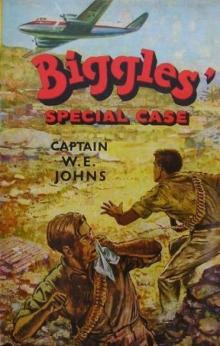 Biggles' Special Case
Biggles' Special Case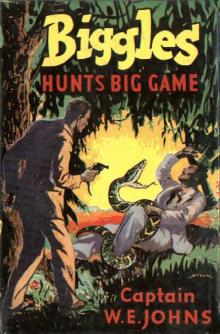 34 Biggles Hunts Big Game
34 Biggles Hunts Big Game 03 Now To The Stars
03 Now To The Stars 55 No Rest For Biggles
55 No Rest For Biggles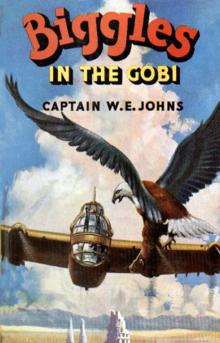 46 Biggles in the Gobi
46 Biggles in the Gobi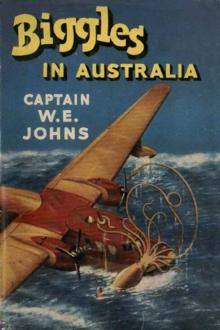 52 Biggles In Australia
52 Biggles In Australia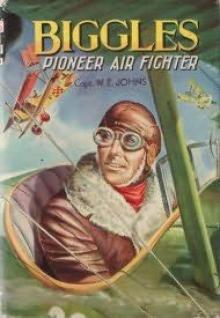 51 Biggles Pioneer Air Fighter
51 Biggles Pioneer Air Fighter 05 Biggles Flies East
05 Biggles Flies East 28 Biggles In Borneo
28 Biggles In Borneo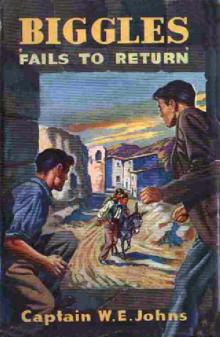 29 Biggles Fails to Return
29 Biggles Fails to Return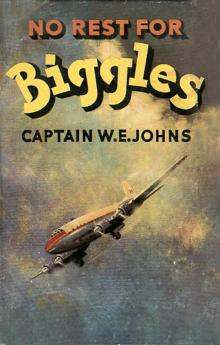 55 No Rest For Biggles (v2)
55 No Rest For Biggles (v2)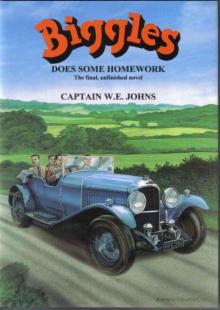 Biggles Does Some Homework
Biggles Does Some Homework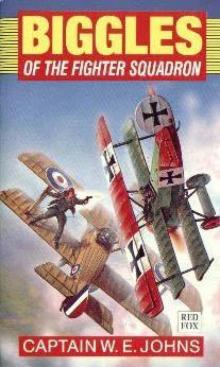 Biggles of the Camel Squadron
Biggles of the Camel Squadron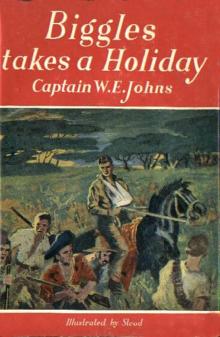 35 Biggles Takes A Holiday
35 Biggles Takes A Holiday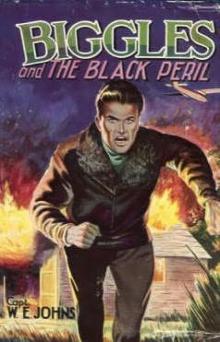 Biggles And The Black Peril (06)
Biggles And The Black Peril (06)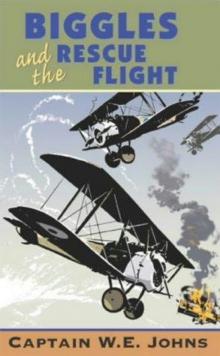 17 Biggles And The Rescue Flight
17 Biggles And The Rescue Flight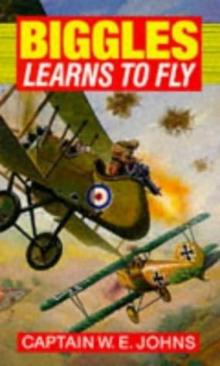 Biggles Learns To Fly
Biggles Learns To Fly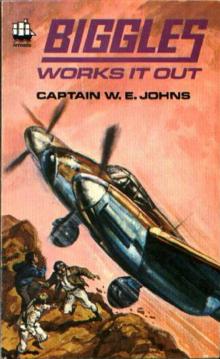 40 Biggles Works It Out
40 Biggles Works It Out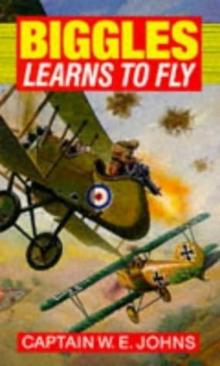 05 Biggles Learns To Fly
05 Biggles Learns To Fly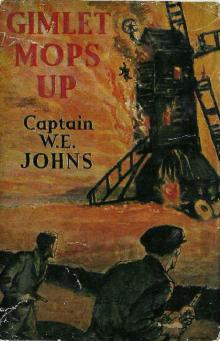 04 Gimlet Mops Up
04 Gimlet Mops Up 10 Biggles and Co
10 Biggles and Co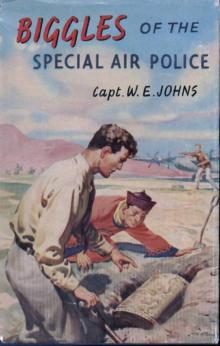 47 Biggles Of The Special Air Police
47 Biggles Of The Special Air Police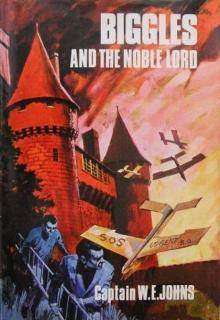 Biggles and the Noble Lord
Biggles and the Noble Lord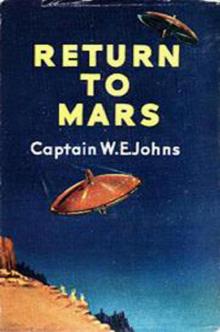 T2 Return To Mars
T2 Return To Mars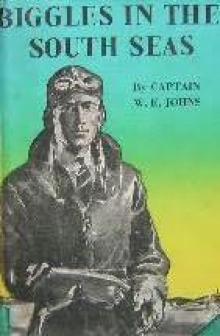 21 Biggles In the South Seas
21 Biggles In the South Seas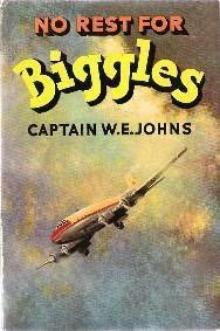 No Rest For Biggles
No Rest For Biggles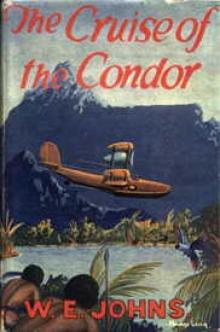 Biggles In The Cruise Of The Condor (02)
Biggles In The Cruise Of The Condor (02)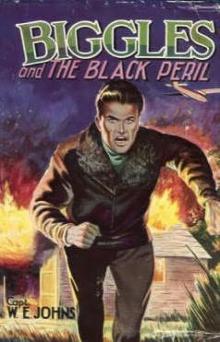 06 Biggles And The Black Peril
06 Biggles And The Black Peril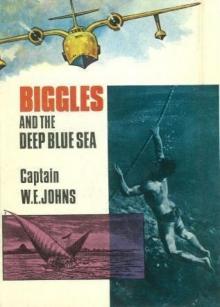 Biggles and the Deep Blue Sea
Biggles and the Deep Blue Sea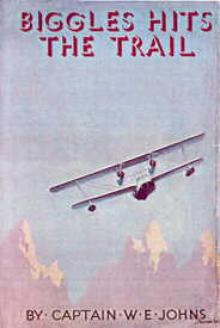 06 Biggles Hits The Trail
06 Biggles Hits The Trail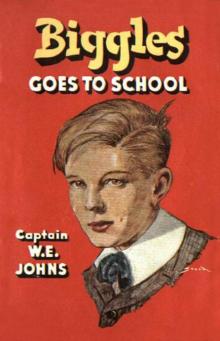 39 Biggles Goes To School
39 Biggles Goes To School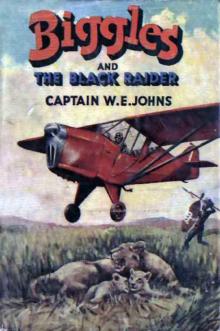 44 Biggles and the Black Raider
44 Biggles and the Black Raider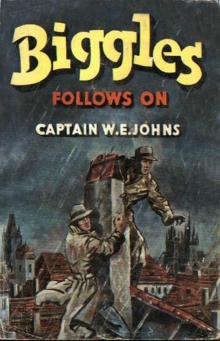 42 Biggles Follows On
42 Biggles Follows On Biggles In the South Seas
Biggles In the South Seas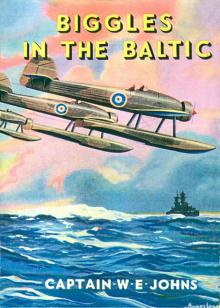 21 Biggles In The Baltic v3
21 Biggles In The Baltic v3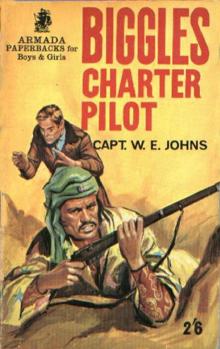 27 Biggles - Charter Pilot
27 Biggles - Charter Pilot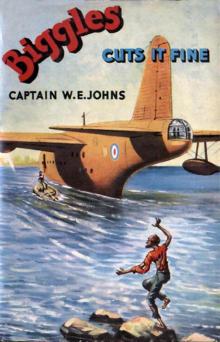 49 Biggles Cuts It Fine
49 Biggles Cuts It Fine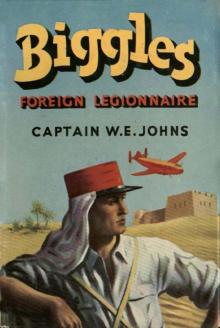 51 Biggles Foreign Legionaire
51 Biggles Foreign Legionaire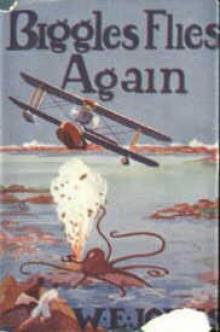 04 Biggles Flies Again
04 Biggles Flies Again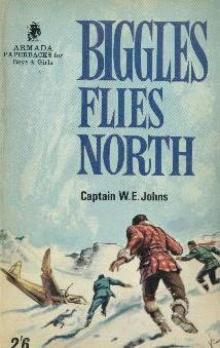 16 Biggles Flies North
16 Biggles Flies North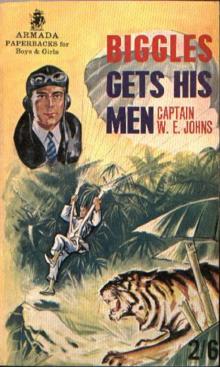 37 Biggles Gets His Men
37 Biggles Gets His Men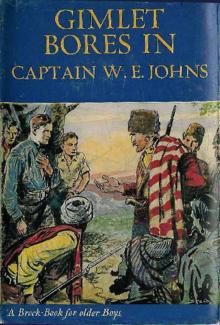 07 Gimlet Bores In
07 Gimlet Bores In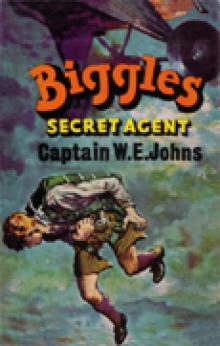 19 Biggles Secret Agent
19 Biggles Secret Agent 32 Biggles In The Orient
32 Biggles In The Orient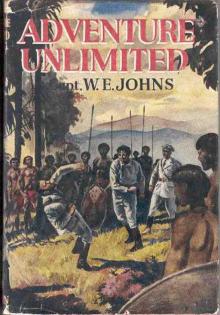 Adventure Unlimited
Adventure Unlimited 26 Biggles Sweeps The Desert
26 Biggles Sweeps The Desert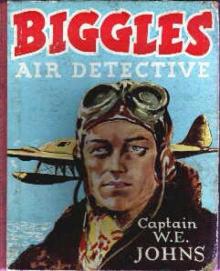 Biggles Air Detective (43)
Biggles Air Detective (43) 36 Biggles Breaks The Silence
36 Biggles Breaks The Silence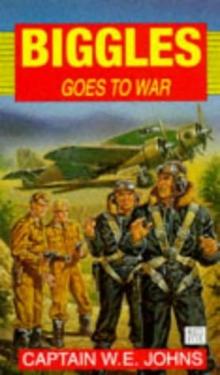 14 Biggles Goes To War
14 Biggles Goes To War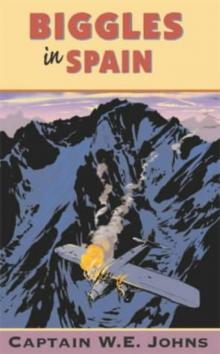 18 Biggles In Spain
18 Biggles In Spain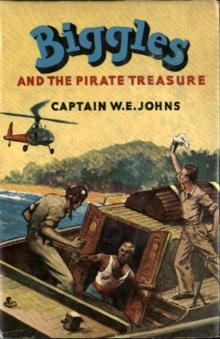 50 Biggles and the Pirate Treasure
50 Biggles and the Pirate Treasure 25 Biggles In The Jungle
25 Biggles In The Jungle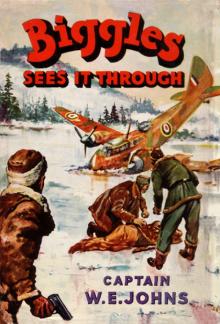 23 Biggles Sees It Through
23 Biggles Sees It Through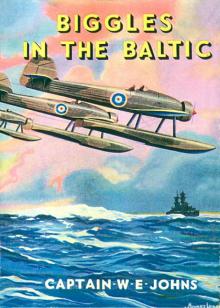 21 Biggles In The Baltic
21 Biggles In The Baltic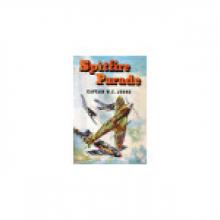 24 Spitfire Parade
24 Spitfire Parade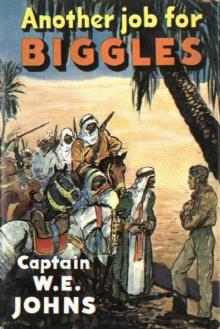 38 Another Job For Biggles
38 Another Job For Biggles 41 Biggles Takes The Case
41 Biggles Takes The Case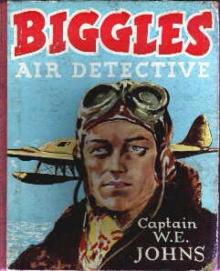 43 Biggles Air Detective
43 Biggles Air Detective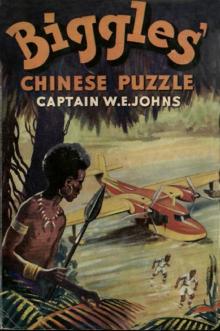 53 Biggles Chinese Puzzle
53 Biggles Chinese Puzzle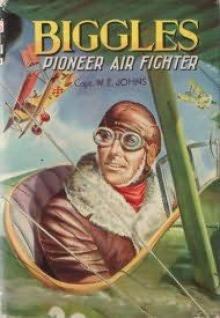 Biggles Pioneer Air Fighter (51)
Biggles Pioneer Air Fighter (51) 22 Biggles Defies The Swastika
22 Biggles Defies The Swastika 01 Kings Of Space
01 Kings Of Space